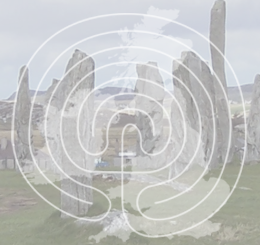Consumption Vine, Dummerston
Tuberculosis has been known by various names throughout history, phthisis, scrofula, Pott’s disease, white plague and of course, consumption. There are several cases throughout New England where a fear of the disease and the lack of medical knowledge to treat it, led to people seeking a supernatural explanation and a cure in old folklore. In many of these cases, where whole families were being ravaged by consumption, it was thought that an evil spirit (interpreted these days usually as a Vampire) was to blame and that it would be found residing in an organ of a recent relative, who had been a victim of the disease, but only if blood still remained in it. In such cases these bodies were exhumed and usually their hearts removed and burned. In some cases the ashes were then mixed into a tonic and given to the ailing patient.
A varient on this theme can be found in the town of Dummerston, Vermont which was settled in the early 18th century. According to ‘The History of the Town of Dummerston’ (1884) by David L. Mansfield:
Lieutenant is the title given on the town records; but on the gravestones of his children, the inscription is Capt. Leonard Spaulding. He was a citizen of the town when it was organized.
The place where he settled and cleared the land was about 2 miles north of the meeting-house and long known as Spaulding’s Hill. He was a prominent and capable man in business affairs and in continual service for the town until the year 1788, when he was unable on account of sickness, to act as one of the committee in finishing the building of pews in the meetinghouse.
He deeded his farm to his son Josiah, June 3, 1778. He also, deeded fifty acres to his son John, June 23, 1778.
In the deed to Josiah, provision was made for Margaret, wife of Captain L Spaulding; also, for Mrs. Betsey Stevens, Mrs, Sarah (?), Mrs. Anna Laughton, and Olive Spaulding, his daughter. He was then near his end with consumption.
Although the children of Lt. Spaulding*, especially the sons, became large, muscular persons, all but one or two died under 40 years of age of consumption, and their sickness was brief. It is related by those who remember the circumstance; after six or seven of the family had died of consumption, another daughter was taken, it was supposed, with the same disease. It was thought she would die, and much was said in regard to so many of the family’s dying of consumption when they all seemed to have the appearance of good health and long life. Among the superstitions of those days, we find it was said that a vine or root of some kind grew from coffin to coffin, of those of one family, who died of consumption, and were buried side by side; and when the growing vine had reached the coffin of the last one buried, another one of the family would die; the only way to destroy the influence or effect, was to break the vine; take up the body of the last one buried and burn the vitals, which would be an effectual remedy: Accordingly, the body of the last one buried was dug up and the vitals taken out and burned, and the daughter, it is affirmed, got well and lived many years. The act, doubtless, raised her mind from a state of despondency to hopefullness.
Lieutenant Leonard Spaulding (Born 1729 – Died 1788, Consumption) had eleven children and six of the children are buried adjacent to each other in Dummerston Center Cemetery. The sixth (Josiah) died over five years later than the fifth in line (John). They were survived by a sister, Olive who moved to Brattleboro. So, did a vine take five years to grow between John and Josiah who was the then burned to save Olive?
The account was obviously published 100 years after the said events and therefore will not be totally accurate. We don’t know if Josiah (or John) was actually exhumed or burned, but this does not take anything away from this peculiar folk belief in a creeping vine of death.

















Recent Comments